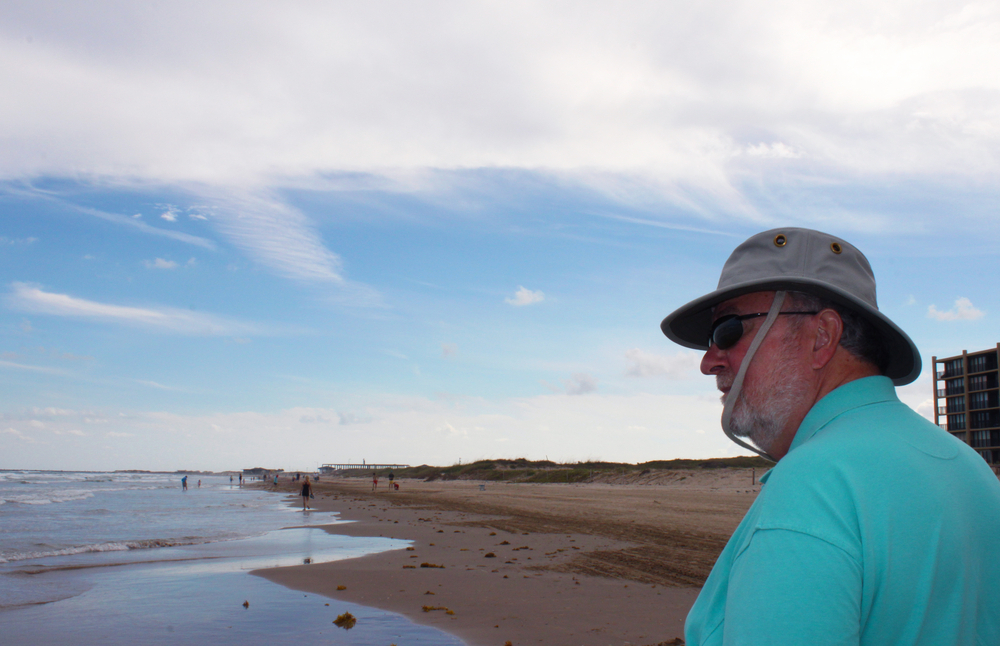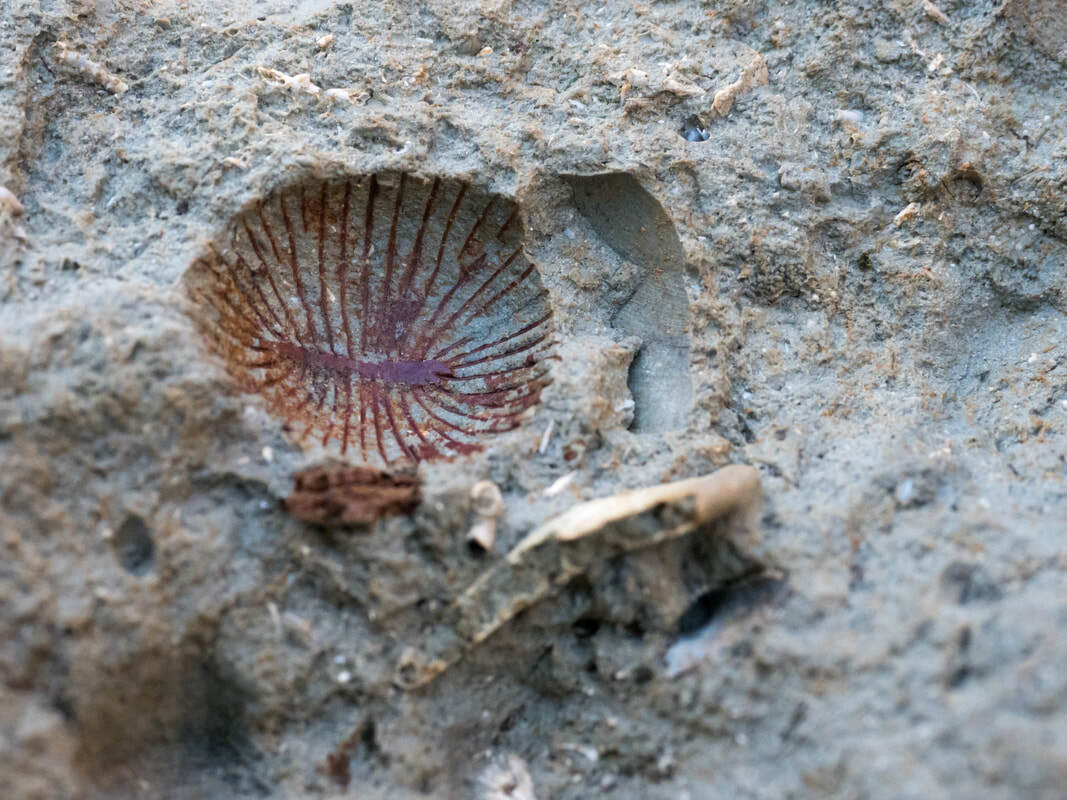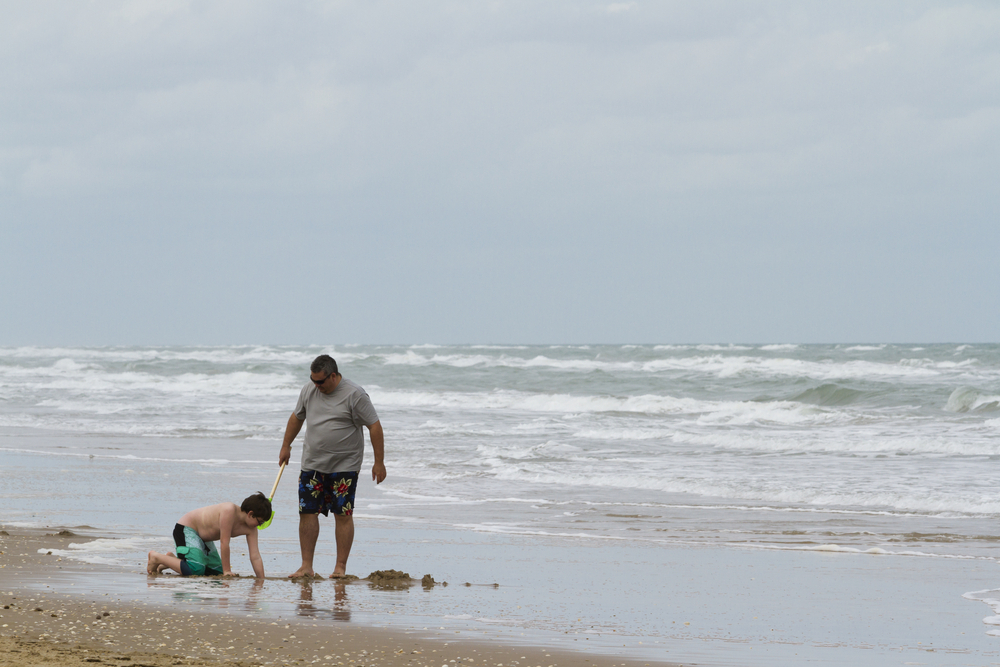South Padre Island: Exploring the Geological Wonders of Cameron County
Click here to see our crystal hunting maps
South Padre Island, a breathtaking barrier island nestled along the Gulf of Mexico, is renowned for its pristine beaches, vibrant culture, and thriving tourism. However, beneath the surface of this coastal paradise lies a hidden treasure trove of geological wonders. For rockhounds, gemologists, and geology enthusiasts, South Padre Island and the surrounding Cameron County present a fascinating landscape shaped by millions of years of geological processes.
As a barrier island, South Padre plays a crucial role in protecting the mainland from the full force of ocean storms and erosion. It also boasts a diverse range of geological formations, from wind-swept sand dunes and expansive tidal flats to the unique hypersaline environment of the Laguna Madre. This article delves deep into the geological history, rockhounding opportunities, and geological attractions that make South Padre Island a must-visit destination for anyone with a passion for Earth's natural wonders.
Formation and Geological History of South Padre Island
The story of South Padre Island began millions of years ago, shaped by the relentless forces of wind, waves, and sediment deposition. The island is a relatively young geological formation, having emerged over the last few thousand years. Its birth can be traced back to the accumulation of sand and sediment transported by longshore currents along the Gulf Coast.
Historical changes in sea level have played a significant role in the island's evolution. Rising sea levels during the Holocene Epoch (approximately 11,700 years ago to the present) inundated the coastline, forming a series of barrier islands, including South Padre. These islands have continued to evolve and migrate as sea levels fluctuate and sediment is deposited or eroded.
The island's geological makeup is primarily composed of unconsolidated sand and shell fragments. Over time, wind and waves have sculpted these materials into a diverse array of landforms, including rolling sand dunes, wide sandy beaches, and expansive tidal flats. These dynamic environments provide habitats for various plant and animal species, contributing to the island's rich biodiversity.
Rockhounding Opportunities in South Padre Island

For avid rockhounds, South Padre Island is a veritable playground. While the island might not be famous for gemstones or precious metals, it offers a unique opportunity to discover a fascinating variety of rocks, minerals, and even fossils. Beachcombing along the shoreline can yield a bounty of shells, sand dollars, sea beans (drift seeds), and even shark teeth.
One of the most exciting aspects of rockhounding on South Padre Island is the chance to find fossilized remains of marine creatures that once thrived in the ancient seas. These fossils can range from tiny shells and coral fragments to larger specimens like fossilized sand dollars and sea urchins. The island's beaches and tidal flats are prime locations for fossil hunting, as the constant movement of sand and water can expose these hidden treasures.
In addition to fossils, rockhounds can also find a variety of interesting rocks and minerals on South Padre Island. Quartz, feldspar, and mica are common finds, while rarer minerals like pyrite (fool's gold) and garnet can occasionally be discovered. The island's sand dunes, sculpted by the wind, are a good place to look for unique specimens.
RELATED TOPIC:Ohio's Hidden Gem: Unveiling the Geological Wonders of Copperas Mountain
Types of Rocks and Minerals
- Quartz: This abundant mineral can be found in various forms, including clear, milky, and smoky quartz.
- Calcite: Often found in the form of seashells, calcite is a common mineral on the island.
- Aragonite: Another mineral commonly found in seashells, aragonite is known for its beautiful crystal formations.
- Gypsum: This mineral can be found in the form of selenite crystals, which are known for their translucent appearance.
Fossils
South Padre Island's fossil record is relatively limited, but patient rockhounds may find fossilized seashells, shark teeth, and other marine remnants. The island's beaches are constantly being replenished with new materials, so it's always worth checking for recent deposits.
Best Locations for Rockhounding on South Padre Island
- Isla Blanca Park: This park, located at the southern tip of the island, offers a mix of beach, dune, and tidal flat environments, making it a prime rockhounding destination.
- Andy Bowie Park: Situated on the bayside of the island, this park provides access to tidal flats and shallow waters, where fossils and other treasures can be found.
- South Padre Island Birding and Nature Center: The trails and boardwalks within this center offer opportunities to explore diverse habitats and potentially discover interesting geological specimens.
Tips and Guidelines for Responsible Rockhounding in South Padre Cameron County
Rockhounding on South Padre Island can be a rewarding and educational experience, but it's important to do so responsibly. Here are some tips to keep in mind:
- Obtain permission: Always obtain permission before collecting rocks or fossils on private property.
- Follow regulations: Check local regulations regarding collecting on public lands, such as beaches and parks. Some areas may have restrictions or require permits.
- Leave no trace: Practice "Leave No Trace" principles, minimizing your impact on the environment. Avoid disturbing sensitive habitats and wildlife.
- Respect others: Be considerate of other beachgoers and rockhounds. Share the space and avoid creating hazards.
- Safety first: Wear appropriate clothing and footwear, and be aware of potential hazards such as strong currents, stingrays, and jellyfish.
Here are some additional tips for rockhounding on South Padre Island:
- Timing is key: The best time for rockhounding is after a storm or during low tide, when new specimens may be exposed.
- Look for clues: Pay attention to the type of rocks and minerals you find. They can offer clues about the island's geological history and the forces that shaped it.
- Ask for help: If you're unsure about a specimen, don't hesitate to ask a local expert or consult a field guide.
- Have fun! Rockhounding is a rewarding hobby that can lead to exciting discoveries and a deeper appreciation of the natural world.
RELATED TOPIC:Crystal Hunting Near You: Top Spots for Unearthing Gems in the US

Legal Considerations for Rockhounding on South Padre Island
Before you embark on your rockhounding adventure, it's important to be aware of the legal considerations:
- Public lands: Rockhounding is generally allowed on public beaches and parks, but it's important to check local regulations for any restrictions or permit requirements.
- Private property: Always obtain permission before collecting on private property.
- Protected areas: Some areas, such as nature reserves and wildlife refuges, may have special regulations or restrictions on collecting.
- Endangered species: It is illegal to collect or disturb any endangered or threatened species or their habitats.
Geological Features and Landforms of South Padre Island
South Padre Island's geological landscape is a testament to the dynamic interplay of natural forces. The island's most prominent features include:
- Sand Dunes: These wind-blown hills of sand are constantly shifting and reshaping, creating a unique and ever-changing landscape. The dunes provide habitat for various plant and animal species, including the endangered Kemp's ridley sea turtle.
- Beaches: The island's expansive beaches are not only a haven for sunbathers and swimmers but also a treasure trove of geological specimens. The constant movement of sand and water exposes shells, fossils, and other interesting finds.
- Tidal Flats: These vast, flat areas are exposed during low tide and submerged during high tide. They are teeming with life, from tiny invertebrates to shorebirds, and offer a unique opportunity to explore the island's marine ecosystem.
- Laguna Madre: This hypersaline lagoon, located behind the island, is a unique geological and ecological feature. Its high salinity creates a harsh environment that supports specialized plant and animal species, including various fish, crustaceans, and birds.
Geological Attractions and Activities
South Padre Island offers a wealth of geological attractions and activities for visitors of all ages and interests:
- Guided Tours: Several organizations offer guided geological tours of the island, providing insights into the island's formation, history, and unique features. These tours often include fossil hunting, rock identification, and exploration of the island's diverse ecosystems.
- Sea Turtle, Inc.: This non-profit organization is dedicated to the rescue, rehabilitation, and release of sea turtles. Visitors can learn about the importance of these ancient creatures and their role in the island's ecosystem.
- South Padre Island Birding and Nature Center: This center offers a variety of educational programs and exhibits on the island's natural history, including its geology and diverse wildlife.
- Beachcombing and Shell Collecting: South Padre's beaches are a treasure trove of shells, fossils, and other natural wonders. Visitors can spend hours exploring the shoreline, discovering unique specimens, and learning about the island's marine life.
Visitor Information and Activities
South Padre Island is a popular tourist destination, offering a wide range of accommodations, restaurants, and recreational activities. For visitors interested in geology, the island provides a unique opportunity to explore a dynamic and ever-changing landscape shaped by millions of years of geological processes.
Whether you are an avid rockhound, a budding geologist, or simply a curious traveler, South Padre Island has something to offer. From guided tours and educational programs to beachcombing and fossil hunting, the island provides a variety of ways to connect with the Earth's natural wonders.
Conservation Efforts on South Padre Island
South Padre Island is a fragile ecosystem, and it's important to protect its natural resources for future generations. Several organizations are working to conserve the island's unique geology and biodiversity, including:
- Friends of RGV Reef: This organization is dedicated to creating and maintaining artificial reefs off the coast of South Padre Island, which provide habitat for marine life and help protect the shoreline from erosion.
- Coastal Bend Bays & Estuaries Program: This program works to restore and protect the estuaries and bays in the Coastal Bend region, including the Laguna Madre.
- Texas General Land Office: This state agency manages public lands, including beaches and parks, and works to conserve the state's natural resources.
Conclusion
South Padre Island is a geological wonderland waiting to be explored. Whether you're a seasoned rockhound or a curious tourist, the island offers a wealth of opportunities to discover the fascinating forces that have shaped this dynamic landscape. By respecting the environment and practicing responsible rockhounding, we can ensure that future generations will have the opportunity to appreciate the island's geological treasures.
Remember:Always be respectful of the environment and leave the area as you found it. Happy rockhounding!
